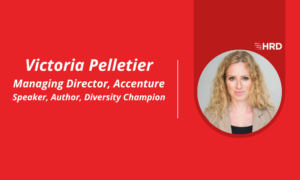What a healthcare scandal teaches us about outdated HR practices
- 5 Min Read
The recent trial into the crimes of Ian Paterson reveals the damage caused by outdated HR practices. David Liddle, CEO, TCM, reveals what HR leaders of any sector must do to protect their employees.
- Author: David Liddle
- Date published: Mar 24, 2020
- Categories

The recent investigation into disgraced surgeon Ian Paterson highlighted the damage that can be caused by over-reliance on out-dated and divisive HR policies.
Paterson, who subjected hundreds of women to life-changing and unnecessary surgery over a 20-year period, was able to ‘hide’ behind HR processes that put employee confidentiality above patient safety.
The situation unfolded against a backdrop of a repressed and toxic workplace culture, where colleagues were afraid either to raise concerns for fear of repercussions – or faced bullying and aggressive push-backs if they did speak out.
Sadly, although the case itself may be extreme, workplace conflict across the healthcare sector is all too common. The last few months alone have seen press reports of fractured relationships between consultants at Great Ormond Street Hospital, a damaging feud between cardiac surgeons at St George’s and an alleged ‘witch hunt’ for a whistleblower at West Suffolk hospital.
These conflicts are not just making life stressful and unpleasant for the people involved. In a health service setting, they are literally putting people’s lives at stake. Research from the organisation Civility Saves Lives suggests that when people are on the receiving end of rude, aggressive, belittling or undermining behaviour, there is an average 61% reduction in cognitive ability.
The age of rage
It’s not just the healthcare sector that has fallen victim to a rising tide of workplace incivility. Research from the CIPD suggest that over a third of employees have experienced some form of interpersonal conflict at work over the past year, either in the form of an isolated dispute or an ongoing difficult relationship.
Why is this happening? A big part of it is that, in a competitive and fast-moving world, many organisations have stopped treating employees as human beings and have become reliant on litigation-style policies, procedures and processes to resolve complex people issues.
Hardly surprising then, that work is becoming a breeding ground for conflict, with stressed and anxious employees struggling to maintain healthy and supportive relationships with their peers and managers.
So, what implications does the Paterson Inquiry have for the way organisations approach disciplinary and grievance and bullying and harassment issues and the policies HR uses to manage them?
What can HR practitioners do to help create safe and respectful workplace environments, in the NHS and elsewhere, where people feel free to speak out and are able to do their best work?
Creating fair and just cultures
A fair and just culture puts people at its heart. It is about aligning the core values of the organisation with the leadership behaviours, the management competencies, the HR processes and the entire employee life cycle.
In a fair and just culture, litigation inspired, punitive and sanction-based rules and processes, which invoke and perpetuate damaging and divisive parent-child relationships, are replaced with a more human and humane approach. Adult-to-adult dialogue is actively encouraged, together with co-operative and compassionate problem solving.
These more open and transparent environments are developed by managers and leaders, who role model the behaviours they want to encourage. In turn, this allows people to speak up freely and encourages them to take responsibility for their actions and their mistakes. The result is a workplace where people can learn and draw insights from issues at work, rather than seeking blame and retribution.
Values become the golden thread running through the organisation, influencing everything from the way managers communicate with and lead their teams to the way the organisation deals with customers and implements its overarching strategy.
Redefining resolution
Underpinning the development of a fair and just culture is a complete redefinition of the way we resolve issues in the workplace. This may involve taking radical steps such as the removal of the traditional disciplinary and grievance procedures.
When disputes arise, people typically end up banging on HR’s door, demanding that formal policies are invoked. Unfortunately, these processes often only serve to make the situation worse, plunging already stressed employees into divisive, confrontational processes where no-one wins, and working relationships are damaged beyond repair.
However, more and more organisations are rejecting these traditional procedures and shifting their focus away from grievance and towards resolution. The TCM model resolution policy, for example, offers a framework that draws on best practice in dispute resolution, positive psychology, emotional intelligence, nudge theory, principled negotiation and systems thinking. It provides a more sophisticated approach to the management of conflict, and creates the conditions for the parties to engage in early resolution where this is appropriate.
There is no one-size-fits-all solution to conflict. The key to success is for each resolution process to be tailored to the situation, following an initial assessment (triage) of the case by an independent Resolution Unit, using agreed objective criteria.
The various remedies may include early resolution, a facilitated conversation, mediation, an investigation or a formal resolution meeting.
We know these more consistent, compliant and compassionate approaches for resolving issues at work are effective, but HR can sometimes be slow to embrace them. There is a real opportunity here for the HR profession to reject the failed policies of the past, to show courage and to become the facilitators of resolution and the enablers of a fair and just culture.
Of course, the challenge is too big for HR to solve alone – but practitioners can certainly take the lead. The key to success will be to work in collaboration with senior leaders and union colleagues to tackle the underlying cultural issues leading to conflict, and to find new, mutually acceptable and beneficial ways of resolving it.
Division and dogma sow the seeds of failure. Pluralism and collaboration are the way forward, both in the health sector and elsewhere.









